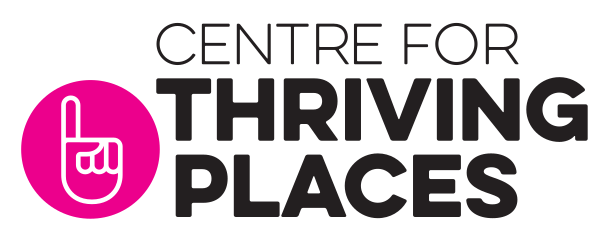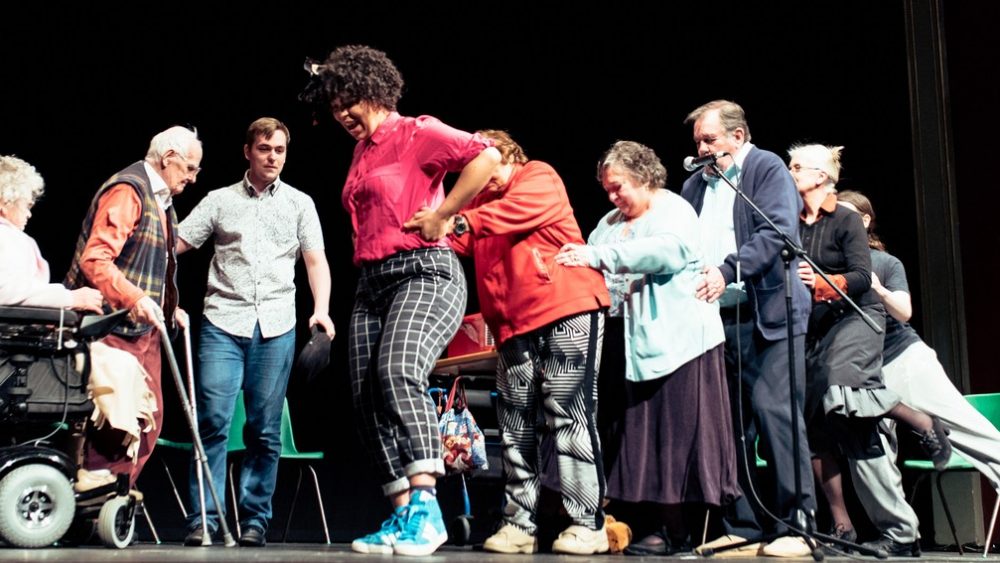As a new member of the Happy City team, I’ll be spending my sunny summer months in Bristol. My placement with Happy City is part of a PhD which explores the value of play as a tool for urban social change. Whilst here I’m capturing some of the different expressions of ‘playfulness’ across the city. The main question I’ll be asking is:
How does play contribute to our understanding of – or to the creation of – wellbeing?
This week I paid a visit to the striking Arnolfini Gallery on Bristol’s Harbourside, where I attended an event hosted by Bristol Ageing Better as part of their ‘City For All Ages Week’. Bristol Ageing Better are dedicated to supporting projects that bring younger and older people together, to ‘collectively learn for life’. The event showcased two initiatives: Wyldwood Arts and Volunteering Matters.
Wyldwood Arts brings people of all ages together through dance, theatre, film and visual arts projects. Their recent project – Chat Back brings together care home residents and a group of young theatre makers from the Old Vic’s Made In Bristol scheme. Participants build stories from conversations about pasts and futures.
By building trust and familiarity, and learning from one another across generations these stories grow organically and have a real impact.
Some of these touching performances can be seen here.
Volunteering Matters recruits older people to volunteer in schools. Participants spend each session sharing memories of local history. Using creative workshops, craft, games and sensory materials the workshops provide a collaborative and exchange-based learning environment.
The stories I heard were inspiring, they challenged what ‘real learning’ should be about, showed how genuine trust and friendship can be built in a short time between people who are 9 or 90. It really brought home how much we can share skills and experience across generations. There were hugely positive reflections from participants, using performance and theatre let everyone involved really be themselves. It’s clear that these projects have immense value and genuinely affect people’s lives.
One of the questions we discussed after the presentations, however, was how that value can be captured. Project facilitators across a range of community sectors spend a lot of energy, time and resources on measuring impact. This is needed for fundraising and to tell the rest of us what amazing work they are doing.
But how can you capture the rich emotional responses, stories and the long-lasting impact on people’s lives that can’t necessarily be measured in a way that easily fits into a database?
There is no doubt about the need to find innovative ways to collect evidence that can demonstrate the valuable and nuanced impact of great work that is happening. At Happy City, our ongoing work is focused on developing measurement tools for understanding people’s wellbeing. These succeed in capturing many of the positive impacts that Wellbeing initiatives bring that other, more financially focused systems, often miss. Our Happy City Pulse, for instance, measures a broad range of wellbeing elements, including peoples connection, their sense of belonging, their optimism, sense of worth, resilience and peace of mind… However, I do think that there are some immeasurable ‘happiness’ impacts that are just that: immeasurable.
Of course we need to be able to see how projects doing good stuff succeed and help them get the vital funding they need.
The way to do this is to communicate their value by providing hard evidence of impact. But we can’t, and maybe we shouldn’t try to, turn everything into data. Could it also be worth looking at more experimental, more playful, methods for recognising value? One reason I’m glad to be working with Happy City is I share the belief that we need to challenge the notion of value at its heart. Happy City’s development of measurement tools such as WellWorth lets organisations show the wider social value of wellbeing benefits. It is through such innovation that we can move toward a society where social, environmental and cultural impact are valued just as much – if not more! – than financial capital.
Becky Sumerling – Happy City Contributor



Comments are closed.